Innovative Dual-Rotor Wind Turbine (DRWT) Designs for Improved Turbine Performance
Modern, utility-scale horizontal axis wind turbine (HAWT) rotor blades are aerodynamically optimized in outboard region, whereas blade sections near turbine hub (i.e., root of blades) are designed primarily to withstand structural loads (i.e., bending and torsional). Therefore, very high thickness-to-chord ratio airfoils, which are aerodynamically poor, are used near turbine root to provide structural integrity. Such configuration results in a “dead” wind zone near rotor axis where virtually no energy is extracted from the wind. Up to 5% loss in wind energy extraction capability is estimated to occur per turbine due to this compromise (Sharma, 2010). These “root losses” occur even in turbines that operate in isolation, i.e., with no other turbine nearby.
Most utility-scale turbines are deployed in clusters, with multiple turbines operating in proximity of each other. Array interference (wake) losses resulting from aerodynamic interaction between turbines in wind farms have been measured to range between 8 - 40% (Barthelmie et al., 2007) depending on wind farm location (e.g., onshore versus offshore), farm layout, and atmospheric stability condition. The significance of these losses is evident by the magnitudes, which are massive especially when contrasted with the disproportionately small efficiency gains (~0.1%) typically sought by the gas turbine industry. While there is abundant literature documenting root losses and wake losses in wind farms, researches on concepts that can mitigate these losses are still very inadequate.
We are conducting a comprehensive theoretical, numerical and experimental study to explore a novel dual-rotor wind turbine (DRWT) concept. As shown in Fig. 1, the DRWT concept will employ a secondary, smaller, co-axial rotor with two objectives: (1) mitigate losses incurred in the root region of the main rotor by using an aerodynamically optimized secondary rotor, and (2) mitigate wake losses in DRWT wind farms through rapid mixing of turbine wake. Mixing rate of DRWT wake can be enhanced by (a) increasing radial shear in wind velocity in wakes, and (b) using dynamic interaction between primary and secondary rotor tip vortices. Velocity shear in turbine wake can be tailored (by varying secondary rotor loading) to amplify mixing during conditions when wake/array losses are dominant. The increased power capacity due to the secondary rotor can also be availed to extract energy at wind speeds below the current cut-in speeds of conventional SRWT. Given the substantial efficiency improvement potential, success of the proposed concept will transform the wind energy industry and provide a means of sustainably meeting our energy needs.
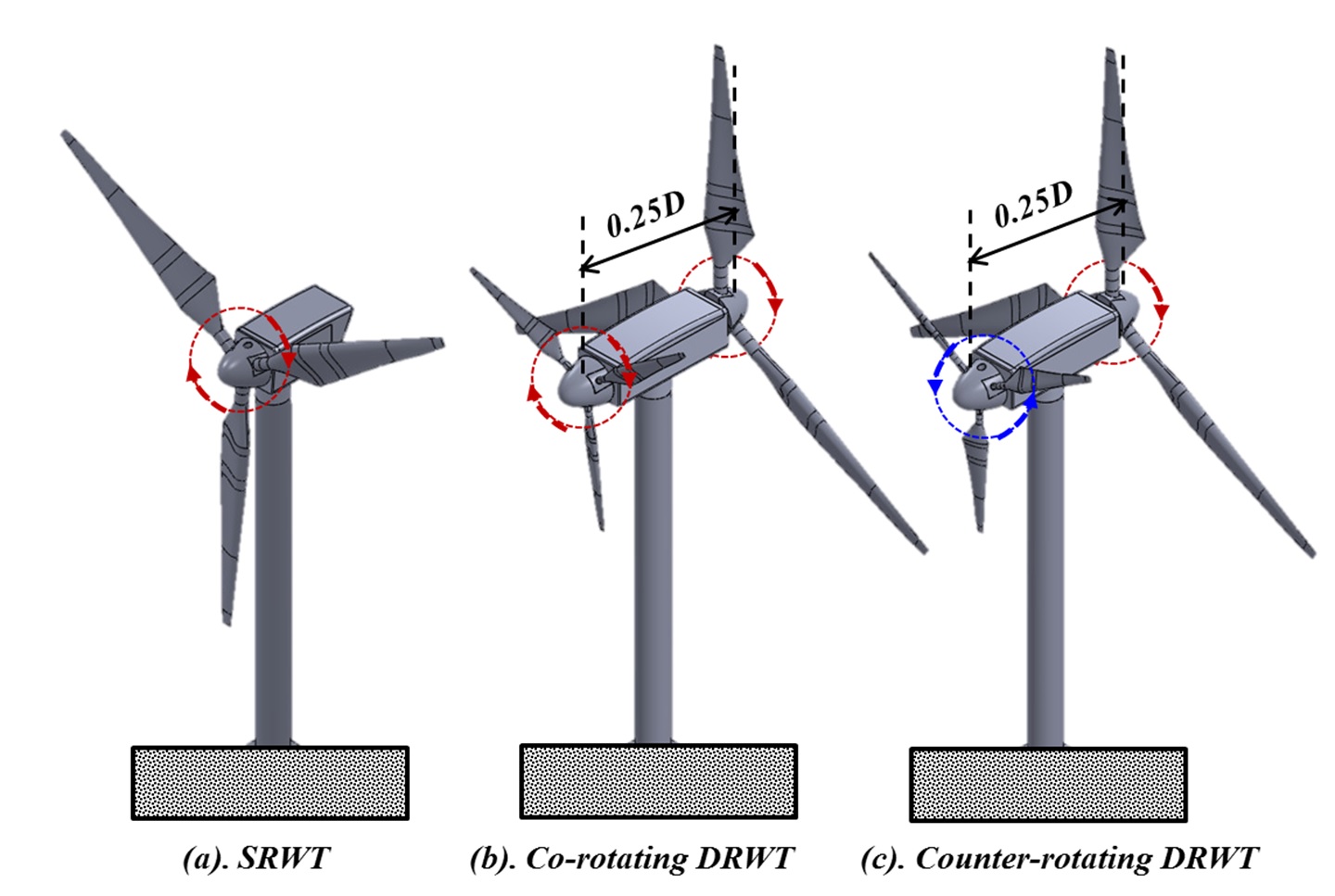
Single-rotor wind turbine (SRWT), co-rotating DRWT and counter-rotating DRWT models
Acknowledgements: The research work is supported by National Science Foundation (NSF) with Grant No. CBET-1133751 and the Iowa Energy Center with Grant No. 14-008-OG
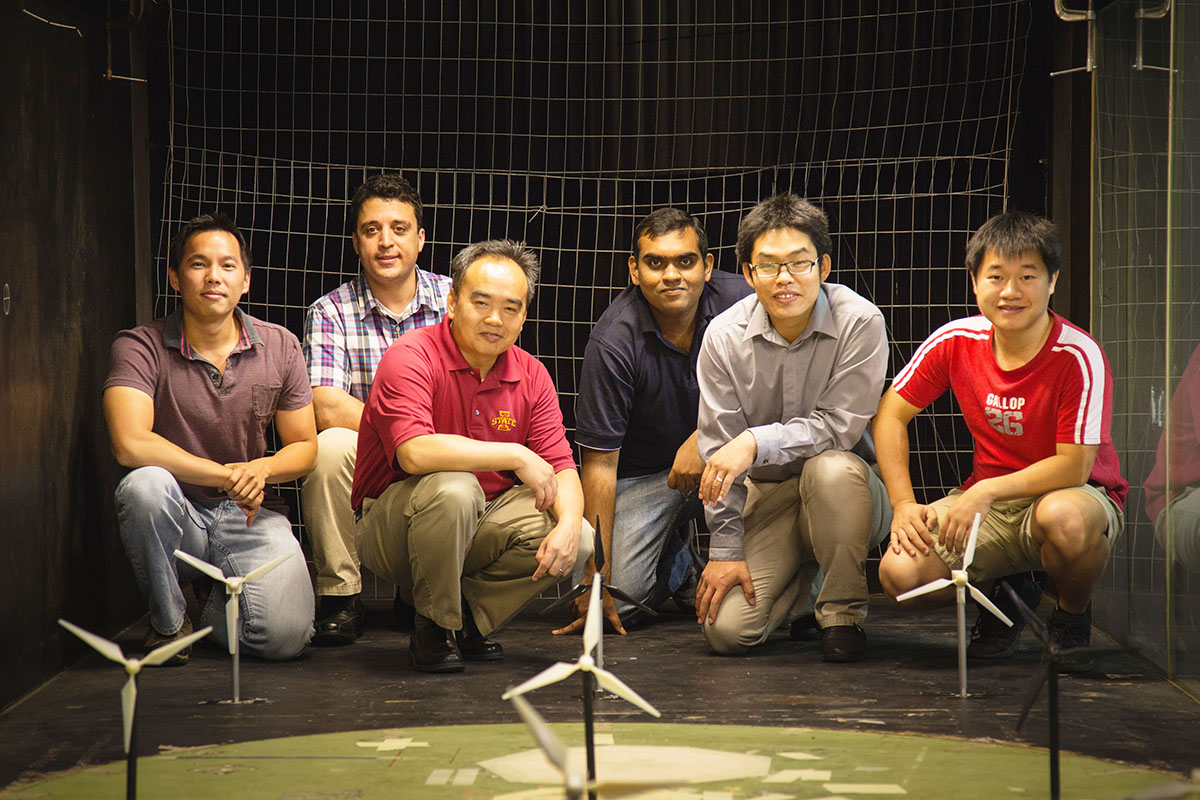
Wind Turbine Testing Team (Left to right): Jim Kuo; Morteza Khosravi; Dr. Hui Hu; Pavithra Premaratne; Wei Tian; Zhenyu Wang
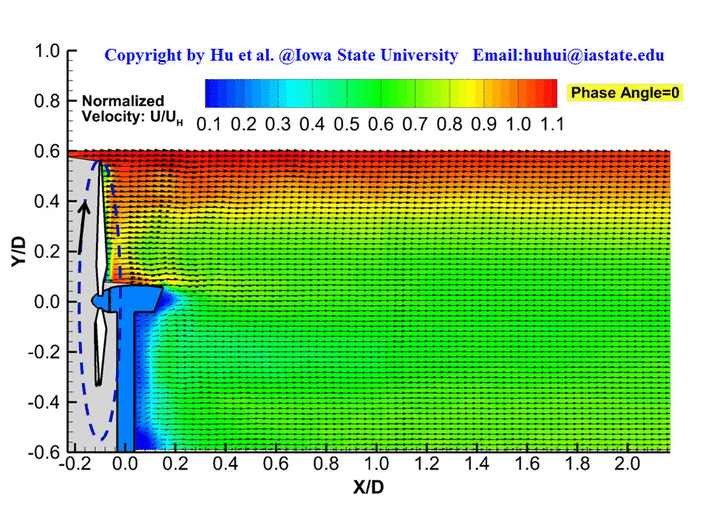
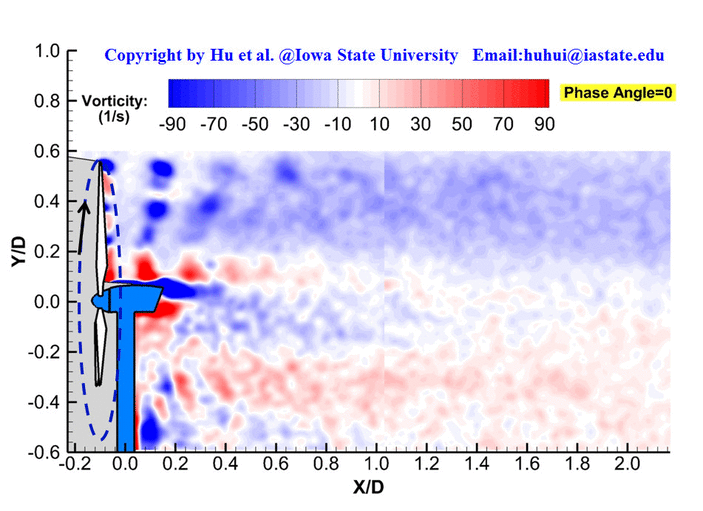
The wake vortices and turbulent flow structures behind a conventional Single-Rotor Wind Turbine (SRWT)
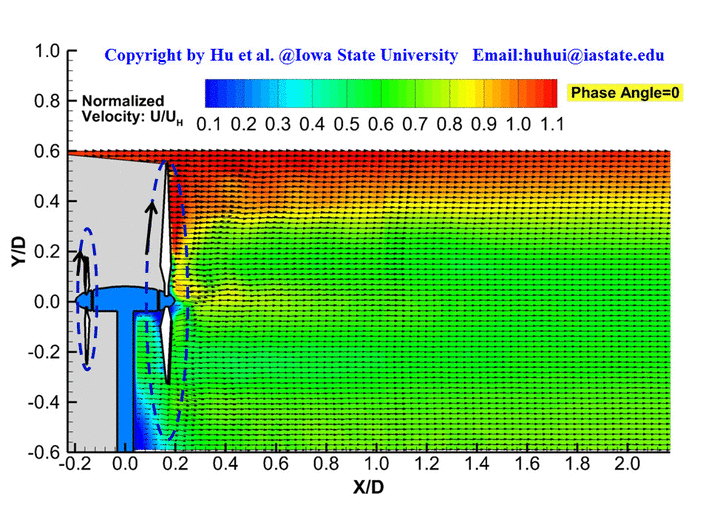

The wake vortices and turbulent flow structures behind a Co-rotating Dual-Rotor Wind Turbine (Co-DRWT)
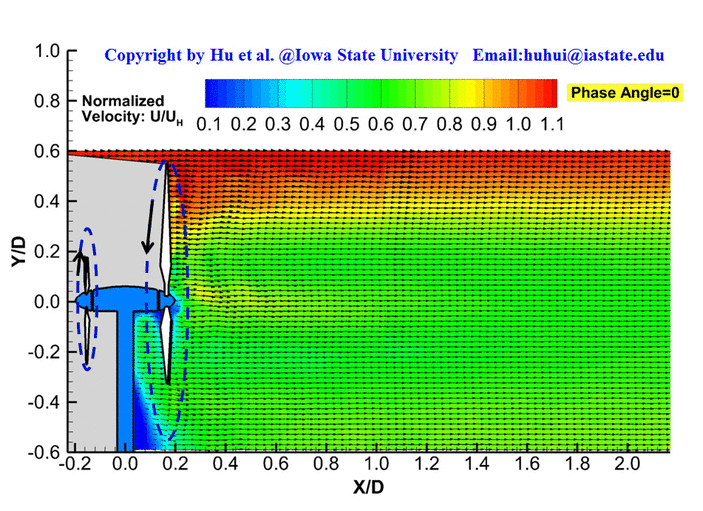
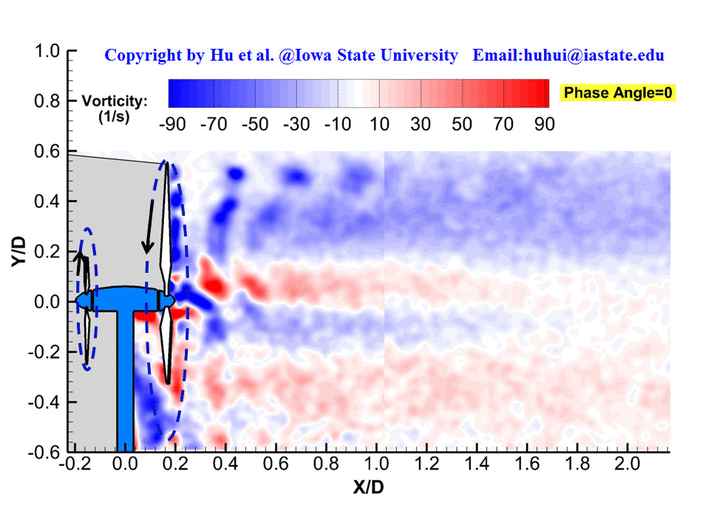
The wake vortices and turbulent flow structures behind a Counter-rotating Dual-Rotor Wind Turbine (Counter-DRWT)
(Copyright © Zhenyu Wang, Ahmed Ozbay Wei Tian and Hui Hu @ Iowa State University, 2014)
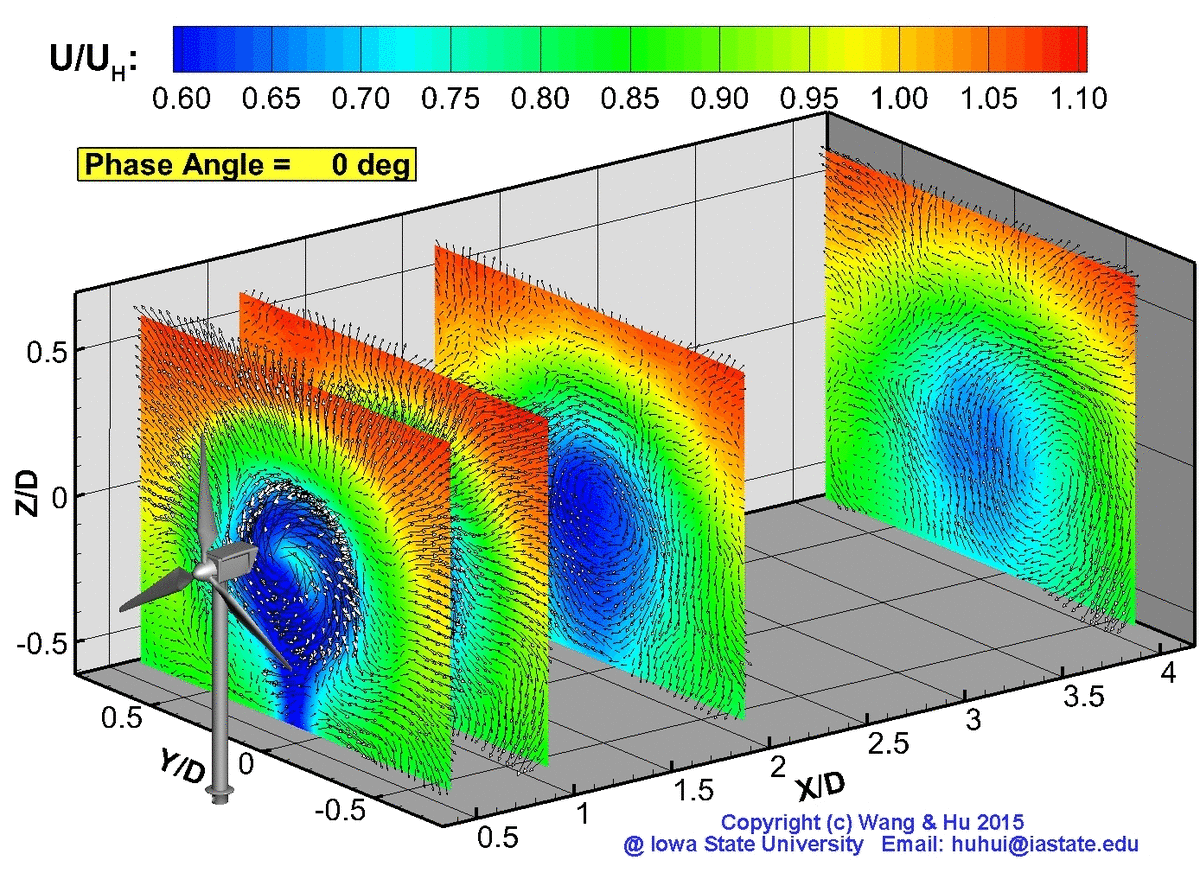
Stereoscopic PIV measurements in the wake behind a single-rotor wind turbine (Wang, Tian & Hu, 2015)
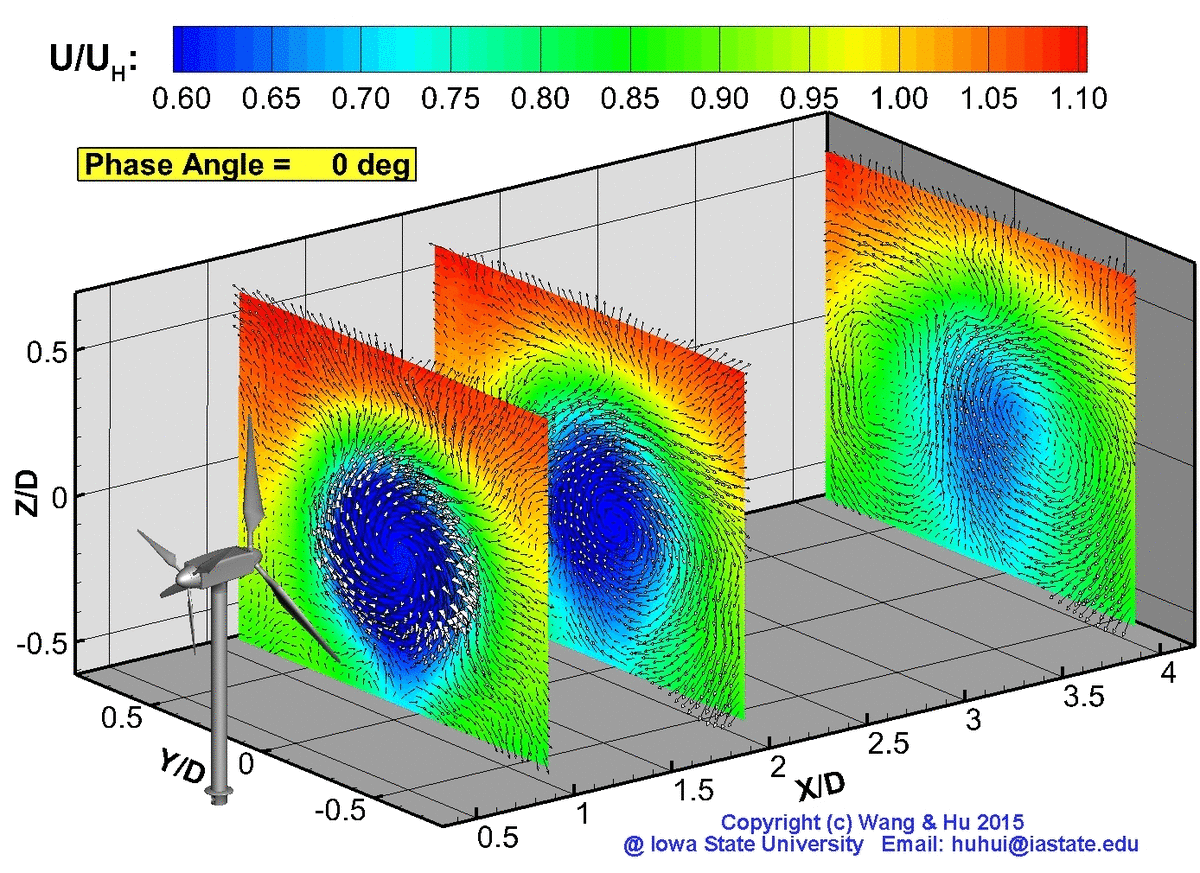
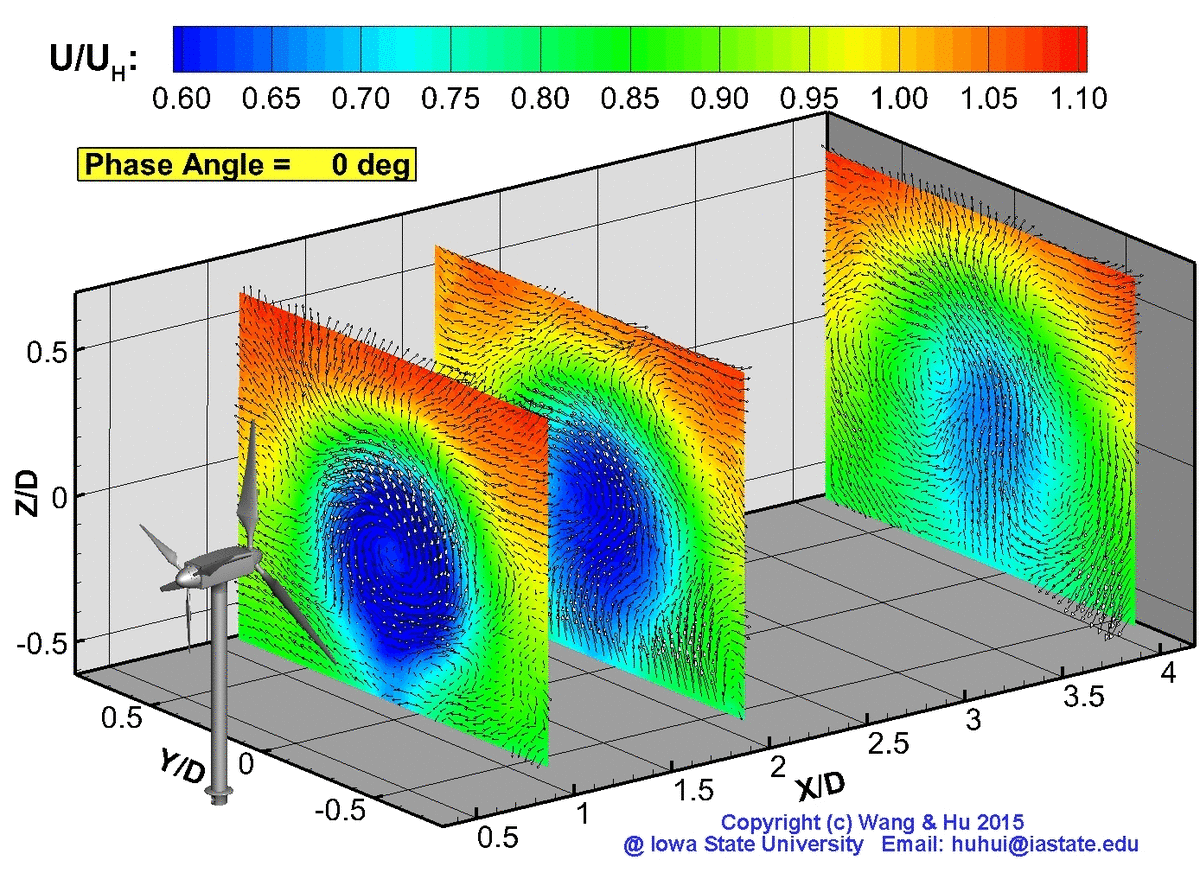
Stereoscopic PIV measurements in the wake behind a co-rotating and counter-rotating DRWTs (Wang, Tian & Hu, 2015)
Acknowledgements: Our research on icing physics and anti-/de-icing technology are supported by following sponsors:
We received 2014 Renewable Energy Impact Award !
Dr. Hui Hu and Dr. Anupam Sharma received 2014 Renewable Energy Impact Award of Iowa Energy Center (IEC) due to their research on "Innovative Dual-Rotor Wind Turbine (DRWT) Designs for Improved Turbine Performance and Wind-Farm Efficiency".
Left to right: Dr. Anupam Sharma, Dr. Mark Petri (IEC Director) and Dr. Hui Hu
(Picture was taken at the Award Ceremony on 2014 Iowa Energy Summit held at Altoona, Iowa on 09/24/2015)
![]()
Howe Hall - Room 1200, 537 Bissell Road, Ames, Iowa 50011-1096, USA
Copyright © Iowa State University. All rights reserved.

